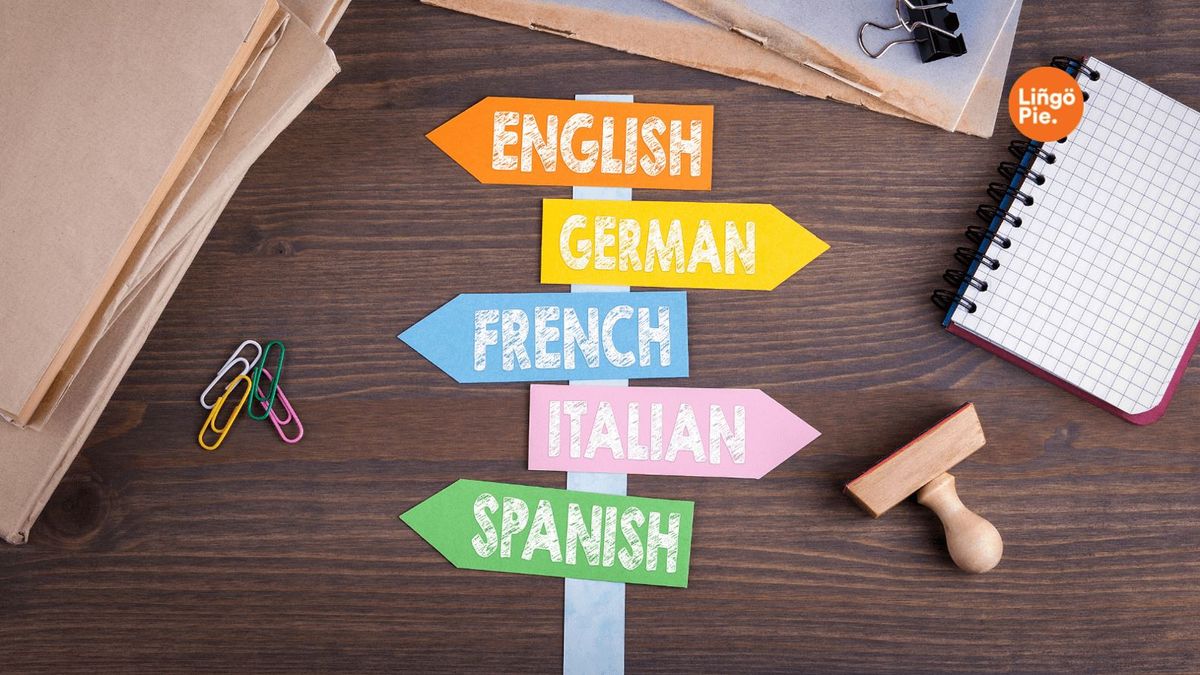So, you’ve decided to learn Spanish. Great! But what are the embarrassing little linguistic pitfalls that you need to watch out for? We round up the seven most common conversational faux pas to help you avoid a red face and delve into why Spanish makes such a great choice to learn as a second language.
1. SO Embarazada!
This one is a classic error and a very easy mistake for new learners to make. You’ve done something silly and want to explain that you’re feeling embarrassed. You reach for the new Spanish words at your disposal, and ‘estoy embarazada!’ comes out, which sounds perfectly rational and fine, right? Not right, unfortunately, because you’ve actually just informed someone that you’re pregnant. Oops! The phrase you actually wanted was ‘que pena.’
This error demonstrates how it can be easy to assume that Spanish words that sound the same as the word in English don’t necessarily share a linguistic connection - or, if there is one, it’s extremely tenuous. On the other hand, sometimes the link is there, but it can still cause problems for the unsuspecting Spanish learner: for example, ‘excitado’ sounds like a word you could use in a sentence expressing your excitement at meeting somebody; but it refers to being sexually aroused. Embarrassing.

2. Me Cago versus Me Caigo
As you’re getting to grips with the pronunciation, you may well fall victim to this little nugget. You won’t be able to miss the fact that you’ve made a misstep, as everyone within earshot will be rolling around on the floor laughing. ‘Me caigo’ is a totally innocent phrase that translates as ‘I fall.’ Just be aware of how it trips off the tongue, though, as the phonetically similar ‘me cago’ means ‘I sh*t myself.’ Uh oh!
If that’s got you giggling and you’re after some more hilarious Spanish curse words, then here are a couple of bonuses: take care when wishing someone goodnight, as ‘’buenas noches’ can be easily mispronounced by beginners to sound like ‘buenas nalgas’ which translates as ‘nice ass’! Not what you necessarily want to be saying to your girlfriend’s parents after a family dinner.
Be extra extra careful with the word ‘sapo,’ too. It means ‘toad’ and can mean, well, ‘toad’ or be used to refer to a lady’s…..yep. Exactly what you’re thinking.
3. You Had WHAT For Dinner?
So, you’re having a reasonable conversation using your new Spanish skills and get asked what you ate for your meal last night. So far, so good.
You want to tell your pal that you had fish, so say, ‘anoche comi pecado’ which sounds totally fine and dandy to your ears. Except you’ve just told your friend that you ate ‘sin’ for your dinner. Who knows the places where her mind has just gone to? Style it out quickly, and correct yourself: ‘anoche comi pescado’ is what you meant, right? She must have just misheard you. Obviously.
There are several words and phrases like this in Spanish: they sound very similar to each other, and learners need to watch out for them. Like this one: ‘que pena’ can be used as an apology. But watch your enunciation, my friends, as ‘que pene’ means, literally, ‘what a penis.’ Now that is one hilarious and cringe-worthy mistake.
It’s also worth noting that, obviously, ‘pene’ should not be used as a reference for a particular shape of pasta. Do NOT try to order this in a restaurant!

4. I Am So Boring
This mistake is very easy to fall foul of but will probably generate a few snickers to alert you to the fact that a blunder has occurred. And you definitely don’t want to make this error on your Spanish dating profile. ‘Estoy aburrido’ is used to convey that, right now, you’re bored out of your mind. But it’s understandable when you’re learning Spanish, to confuse this with ‘soy aburrido,’ which sounds very similar but means ‘I’m boring.’ That might explain why you’re not getting those swipe rights, yes?
‘Estoy’ and ‘soy’ are well-known agitators when it comes to getting started with Spanish; more on these reprobates below.
5. What a Guy
If you want to tell someone - your Spanish tutor, your boss, a male friend, for example - that they’re a good guy, you might think that saying ‘eres un buen hombre’ is the logical sentence to use. Sorry to say it’s not, though. Because you’ve just told your tutor/boss/friend that you think they’re sexy. To tell someone that they’re a good guy, the phrase required is ‘estas muy bueno hombre.’
This is a classic example of how literal translations from one language to another don’t always quite work out: logically, what you said made sense but, as in any language, sometimes in translation, meanings can get muddled to a mirth-inducing effect.
6. I Have Hunger
To express that you’re hungry in Spanish, you would say literally, ‘I have hunger,’ which translates as ‘tengo hambre.’ Unfortunately, this sounds to the ear very much like ‘tengo hombre,’ which means ‘I have a man.’ This is why your colleagues are looking at you weirdly when you vehemently utter the latter while rubbing your tummy at the approach of the office lunch break.
7. Verbs Are Fun(ny)
What often causes some consternation at the start of the Spanish learning journey are the two forms of the verb meaning ‘to be’ - ‘estar’ and ‘ser’- which can cause some funny little conversational turns. For example, ‘estoy cansado’ is what you’d say to tell someone that you’re tired, but ‘soy cansado’ means ‘I am tiring.’
Watch out for these verbs and practice listening and speaking Spanish as much as possible to get to grips with which to use when to avoid dealing out an unintended insult. For example, a sleight of hand with your verb conjugation, and you’ve gone from telling someone that they’re poorly to informing them that you think they’re evil. Ouch.

Getting Started With Learning Spanish
Despite the potential for making some hilarious mistakes when picking up the language, Spanish is a relatively easy language to learn that is useful both in terms of employment and travel opportunities.
So, what is the best way to learn Spanish? Immersing yourself in the new language as much as possible is widely recognized as the best method to become proficient in the shortest space of time.
So, as well as any traditional book-based learning you’re undertaking, be sure to spend plenty of time listening to Spanish music, leafing through Spanish language magazines, and watching subtitled Spanish tv programs and movies. This will not only increase your vocabulary and knowledge of sentence structure but will help you hugely with pronunciation, so you’re less likely to make one of the errors listed above. Though we can’t guarantee the latter.
Is Spanish a Hard Language to Learn?
Spanish is generally regarded as a relatively easy language to learn. It’s largely a phonetic language, and its pronunciation and grammar rules are consistent. It also shares a significant amount of vocabulary and structural traits with the other four Romance languages - French, Italian, Portuguese, and Romanian - so if you have some proficiency in any of these tongues, you will likely find it fairly easy to pick up Spanish.
Spanish only has five vowel sounds, which are always pronounced in the same way; this helps a lot when it comes to learning the language. Plus, although, as we’ve seen above, we have to be super careful about assuming that words that sound similar in Spanish and English actually have the same meaning, in general, the two languages share a significant amount of vocabulary.
And if you’re wondering ‘how long does it take to learn Spanish?’ then the answer may surprise you. If you combine some of the immersive techniques mentioned above with your book-based learning, you could achieve a degree of fluency in as little as six months.
How To Stay On Track
Keeping motivated and engaged is vital to help you achieve your learning goals, especially if you’re trying to study around work and family commitments. The first step, once you decide to learn Spanish, is to create a learning plan. Be realistic about what’s achievable for you in terms of the hours you have available to study. Break up your overarching language goal into achievable weekly targets - hitting lots of small goals can be a really rewarding way to stay on track. And don’t forget to celebrate your successes along the way!
When it comes to book-based studying, the best approach is to divide up your home study time into small chunks throughout the day, if possible, rather than having one mammoth daily session. This will help you both to retain the information you’re learning and to not lose motivation.
Finding a study buddy is a fantastic way to keep your motivation levels up, as you can both help and encourage each other to keep moving towards your targets. Connect with someone on campus, or through an online learning app, and arrange, for example, to have a twice-weekly phone conversation that’s conducted entirely in Spanish. Shoot each other regular emails in the language, too. You could also see if there are any meets local to you, designed for fellow students to come together to practice their listening and speaking skills.

The immersive techniques mentioned above are some of the best ways to keep you engaged - and anything that makes learning fun is going to supercharge the speed with which you gain proficiency.
So enjoying a binge-worthy Spanish box set, listening to your favorite music sung in Spanish, or heading out with a group of fellow learners for coffee or beer over which you agree to only converse in Spanish are all great ways to get you speaking the lingo in no time.
Why Should I Learn Spanish?
Spanish is a world language; it’s the official language of twenty countries and there are over five hundred million speakers of Spanish across the globe. It’s increasingly seen as being a language of business and, with Spanish businesses expanding to new territories overseas, having this language on your resume is going to put you ahead of the game.
A knowledge of Spanish offers the opportunity for a wonderful awareness of the richness and diversity of Hispanic culture, too, as well as making travel to Spanish-speaking countries a much more memorable and rewarding experience. With fluency in Spanish comes opportunities to make friends, to navigate your way around the country with ease, and to converse with the locals about the little off-the-beaten-path gems that take your trip to the next level.
And last but not least, learning a new language is incredibly beneficial for cognitive development and functioning: studies have shown a clear link between language learning and an increase in memory capacity and problem-solving, as well as an enhancement in the ability to problem-solve and think creatively. The evidence suggests, too, that those who are bilingual are at a lower risk of developing Alzheimer’s or, where it does occur, experience a much slower progression of the disease. This is thought to be due to the new neural connections that are formed during language learning and the increased dexterity of the brain in those who frequently switch from one language to another.
So, there you have it. When you’re learning a new language, you’re going to make some funny mistakes; it’s an inevitable part of the journey. You may inadvertently tell a stranger you’re pregnant, that you ate something very odd for dinner, or inform a date that you’re boring. You might even express to your colleagues, after a little stumble in the office, that you’re having an ‘accident’ in the pants department.
But these potential pitfalls are vastly outweighed by the benefits that learning a new language will deliver to you. Such as improved mental dexterity, the increased likelihood of a raise, the enrichment of your travel experiences, and the opportunity to make new friends.
And your ability to give everyone a good laugh, too, of course.





